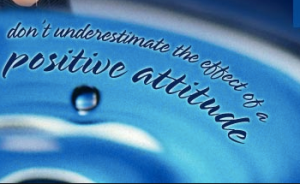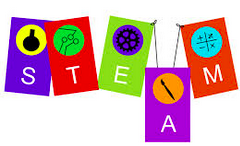 It’s all about culture. Culture establishes the expectations that are set within an organization for how people will be treated, the amount of trust that employees are given to do the jobs they were hired for and the support they will receive when times get tough. Trusting employees to do their jobs well while also making it safe to take risks and “fail” (first attempt in learning) along the way to learning how to do things better will create a culture that inspires innovation. It will also inspire the professional use of the Four Cs in education – creativity, communication, collaboration and critical thinking.
It’s all about culture. Culture establishes the expectations that are set within an organization for how people will be treated, the amount of trust that employees are given to do the jobs they were hired for and the support they will receive when times get tough. Trusting employees to do their jobs well while also making it safe to take risks and “fail” (first attempt in learning) along the way to learning how to do things better will create a culture that inspires innovation. It will also inspire the professional use of the Four Cs in education – creativity, communication, collaboration and critical thinking.
A small school district Superintendent recently told a story of her first couple of months in her new position. She knew she was stepping into an environment with low morale and suspected that there would be obstacles to overcome in the process of establishing a professional learning culture that embraces the tenets of a 21st Century education. Nevertheless, she was still surprised to review the previous year’s middle school schedule and the report cards for the different grade levels.
The courses at the end of the day for the middle school student included handwriting as well as arts and crafts. Report cards for each grade level showed a separate grade for homework completely divorced from the varying subject matters. She felt the challenge of culture change loom heavy, but was also ready to dive right in. Getting the classes aligned with current standards and 21st Century skills was a need too great not to embrace immediately. Students in her district would be competing with students from larger districts when they entered high school where these components were already in place. She not only valued ensuring that the children in her district would receive an equal education to those in larger districts, but saw it as moral imperative. All the while she also articulated a long-term goal of creating innovative programs that others would want to model.
The Superintendent began to meet with individual teachers over the summer after having redesigned the middle school program to include an end of the day exploratory wheel. She met with the handwriting and math teacher first and nervous about what the answer might be asked one simple question, “If you could teach anything you wanted at the end of the day, the subject that would most excite and inspire you, what would it be?” After a brief pause, she received an answer that made her smile, “You know I was an art major and I’ve always wanted to design an art course and share that passion with my students.” The Superintendent happily replied, “Design the course and put together a list of the supplies you’ll need for the year. You’re teaching art.”
She met with the social studies teacher next and asked the same question, “If you could teach anything you wanted at the end of the day, the subject that would most excite and inspire you, what would it be?” He knew the question was coming and was ready, “I would love to teach a technology class and incorporate 20 percent time for my students.” The Superintendent couldn’t believe how well this was going. She shared the ISTE standards, Common Sense Media and how to engage with other teachers on Twitter and told the young social studies teacher to design how he would like the course to look and let her know.
With only the science teacher to go and some comments from various staff members that she usually “taught” a homework class, the Superintendent started to think about strategies that could engage the next teacher in some more thoughtful ideas for an exploratory that students would really enjoy. The last teacher came in and when asked, “If you could teach anything you wanted at the end of the day, the subject that would most excite and inspire you, what would it be?” without taking a breath answered, “I’ve always wanted to teach a robotics and engineering class. I designed a course several years ago and even have materials at home already.”
Trying hard to not let her mouth drop open at this incredible response, the Superintendent realized, that by simply giving her staff the opportunity to share their passions and saying, “Yes,” a STEAM (science, technology, engineering, art and math) program had been born. A month into the school year, students were ending their days by building bridges, exploding volcanoes, creating movies and 3D drawings.
Establishing a culture of trust, saying yes and allowing her teachers to experiment designing their courses around their passions quickly increased the quality of the overall middle school program and had a strong impact on the work happening in the lower grades as well. She walked into the kindergarten class with the self proclaimed, “I don’t understand technology “ kinder teacher to find a small group of 5 year olds creating Google slides with CVC words while explaining their words to each other. The 1st, 2nd and 3rd grade teachers got together over a weekend and with the help of a couple of their husbands redesigned their classroom layouts to support collaborative groupings and easier integration of student computer use, the classroom projector and interactive HUE document cameras.
The change in culture is in its infancy. Yet, by putting trust in her staff, bringing classified staff in to receive the same training the teachers received, establishing a clear understanding that the technology skills embedded in the Common Core standards would be integrated into classroom instruction and making it safe to try new material and approaches, the students in this Superintendent’s small school district are receiving a top notch education and the staff morale has increased as they have been given the trust needed to make great things happen for kids.



Might I ask how long the courses on the wheel last? It would be great to have enough so that the kids could get through each course on the wheel in a few weeks and then start anew with the new grading period. Keep things moving for teachers and learners both!
LikeLike
How long do the courses on the wheel last? It would be great if kids could get through them all during a grading period and start fresh each new term.
LikeLike
The exploratory wheel is part of a trimester rotation. Each 6th, 7th and 8th grader receives a trimester of art, technology and engineering. The curriculum is built upon each year offering new material and challenges by grade level.
LikeLike